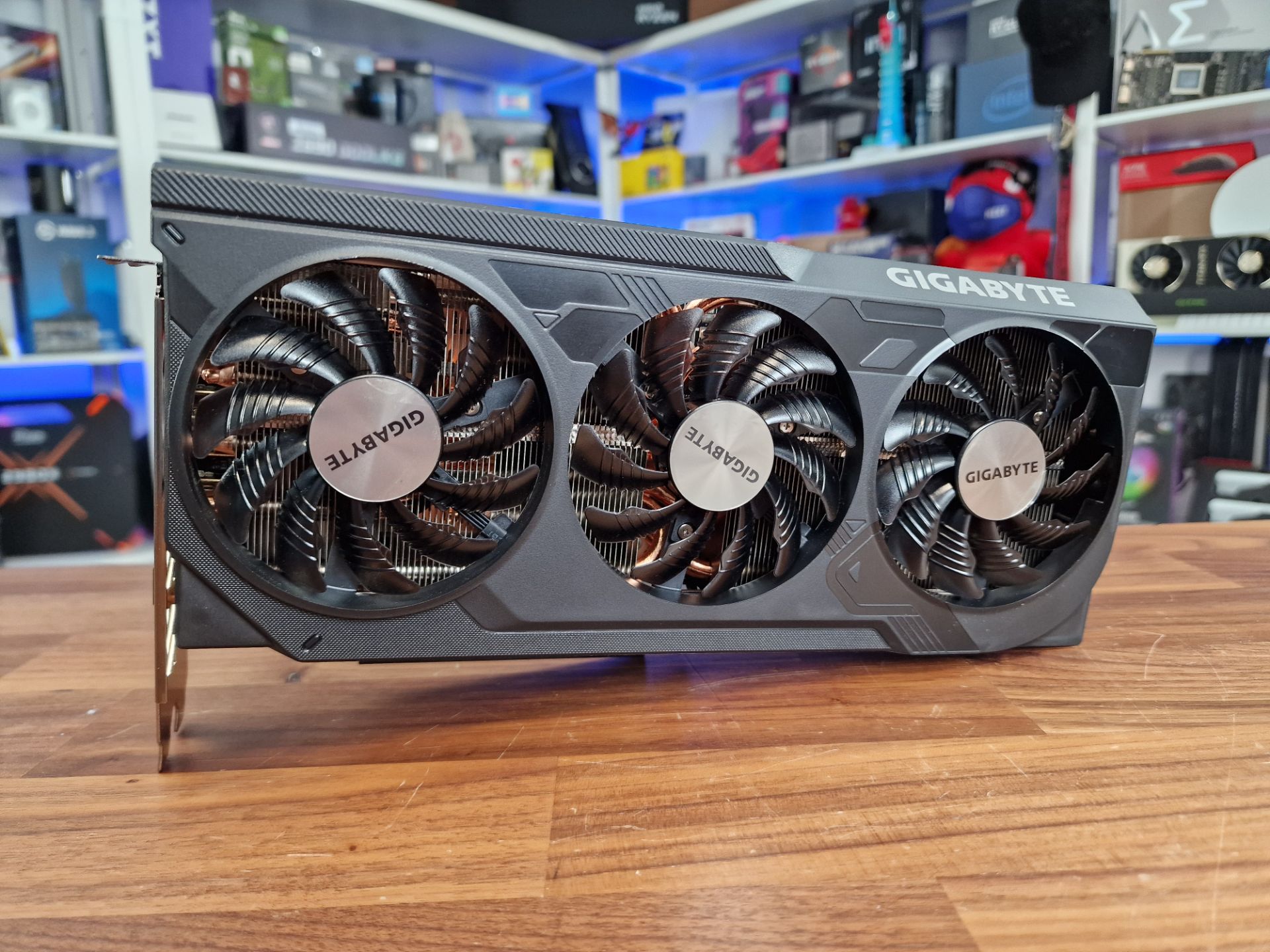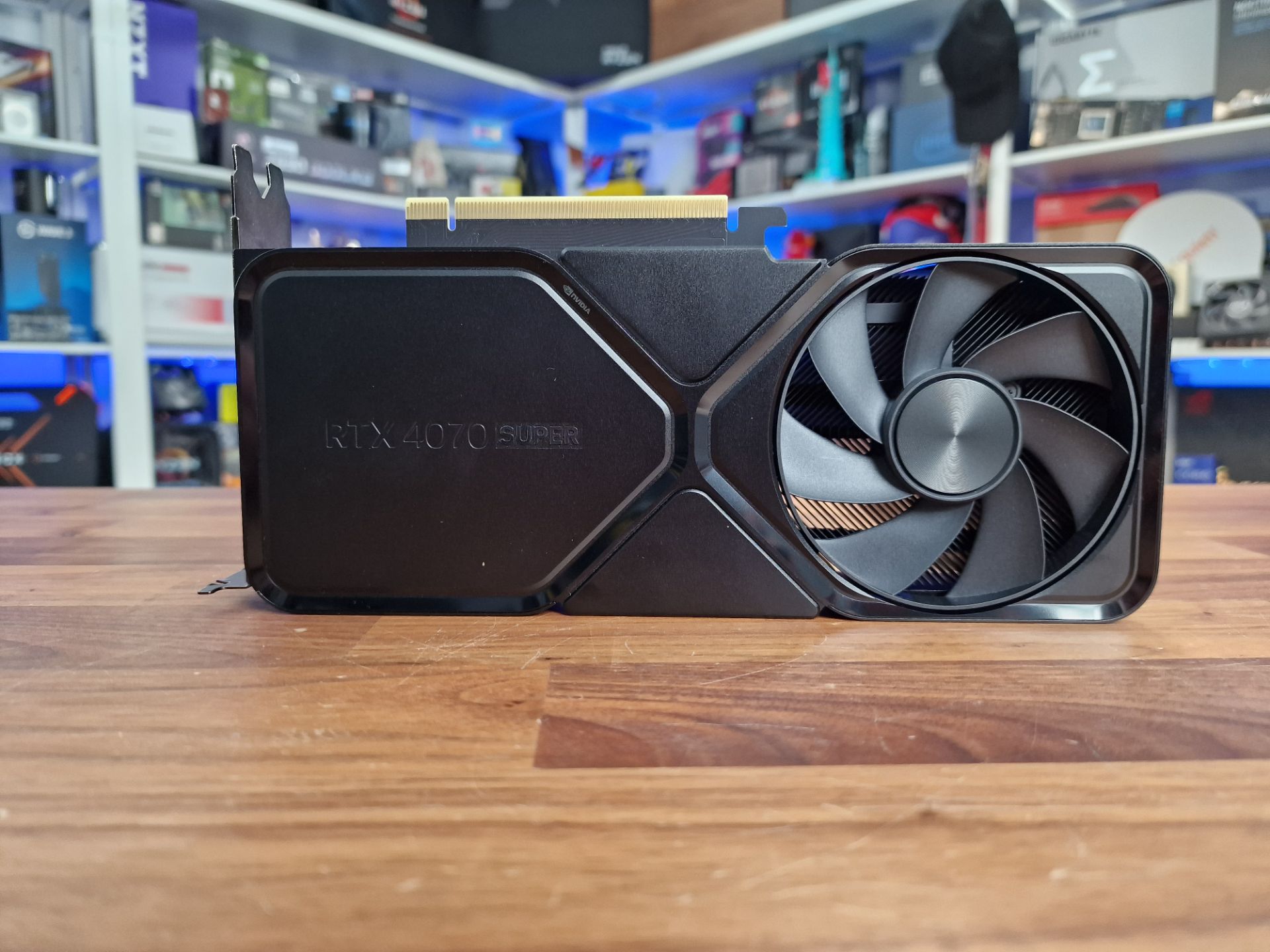Gigabyte Radeon HD 7970 OC 3GB Graphics Card Review
The card is typical of what we’ve seen from Gigabyte with their patented WindForce cooler though slightly different to their Super Overclock edition cooler which incorporates a brushed metal effect shrouding. The Overclock models, much like this one include a plastic shrouding but still incorporate a triple fan design. The cooler encompasses the whole of the card from top to bottom, and from front to back to give the best possible surface contact and heat dissipation across the card.

The triple fan design incorporates three PWM style Gigabyte branded fans with a light smoked translucent design. Though the cooler may look quite large, it only takes up two slots inside your chassis and the cooler doesn’t extend past the width of the two expansion slots.

Power wise we find a single 6-pin and single 8-pin PCI-Express power connectors allowing the card to pull a quoted maximum wattage of 210 watts meaning that a good branded 550/600w power supply should be sufficient to run this card.

Before we talk about the CrossFire capabilities, we though that it was worth mentioning the big metal bar that sits across the top of the card. Countless cards on the market are fitted with large coolers which leads to the card bending towards its far end. This bracket that Gigabyte have fitted allows for extra stability across the vital part of the cards PCB allowing for a longer life and improved durability which as we know, is what Gigabyte stand for. Back to looking at the CrossFire connectors, we can see two connectors allowing for two, three and even four cards in a multi-GPU configuration.
You may also notice the tiny switch to the left which is numbered 1 and 2, which allows you to select between the two BIOS versions, of which option 2 puts the card to its factory default settings.

Connectivity wise we see a nice variety of connectors allowing large resolution high-definition displays through use of a dual-link DVI port, HDMI or two mini DisplayPort connectors.

Taking a look at GPU-Z, we can see a speed of 1000MHz on the GPU clock, compared to a stock speed of 925MHz on a reference card. The memory is left at stock speeds of 1375MHz, as leaving the whopping 3GB of memory at stock speeds can’t be justified to be overclocked, and instead Gigabyte believe that simply overclocking the GPU clock is sufficient, but we shall put that to the test.












